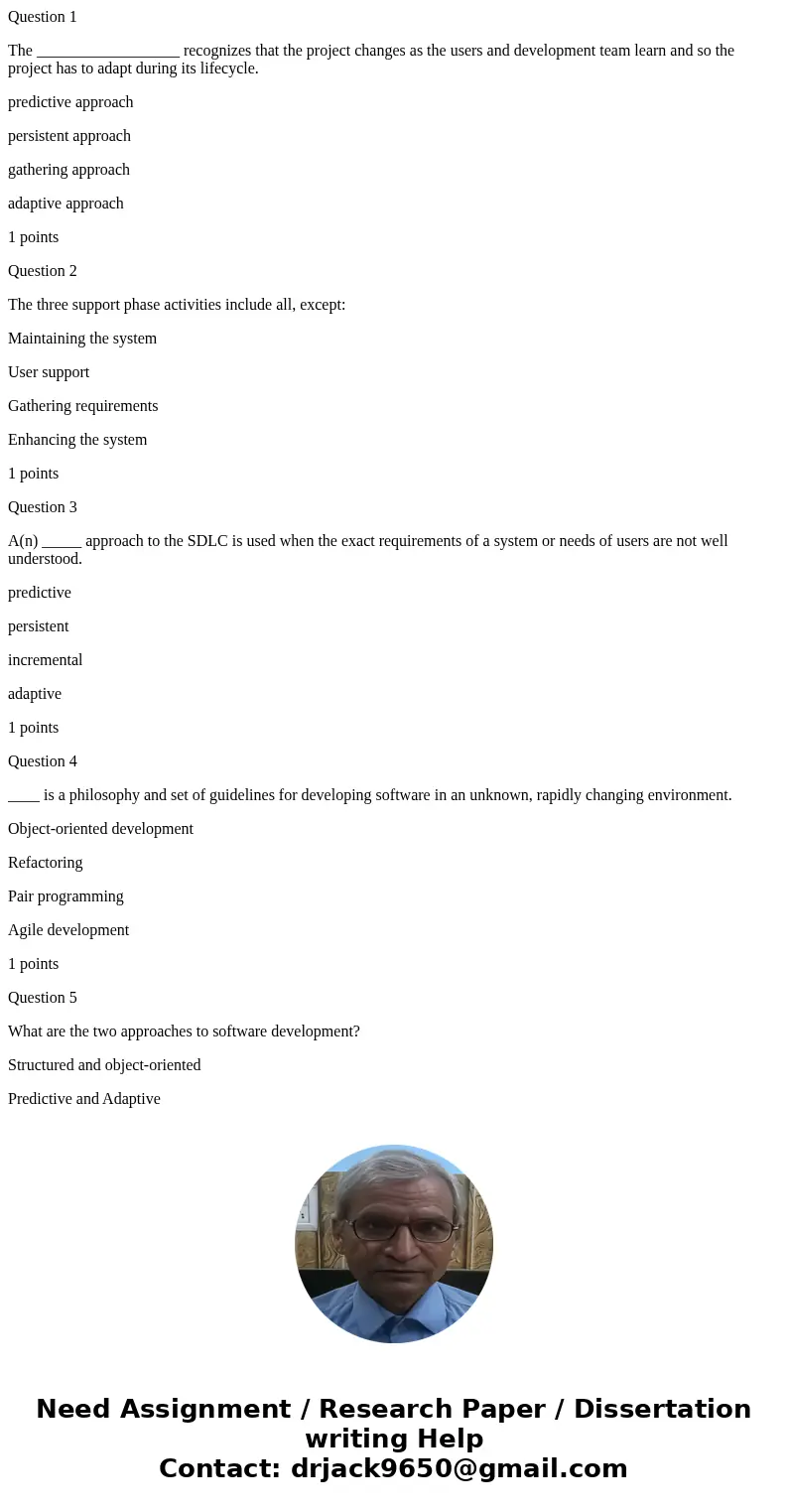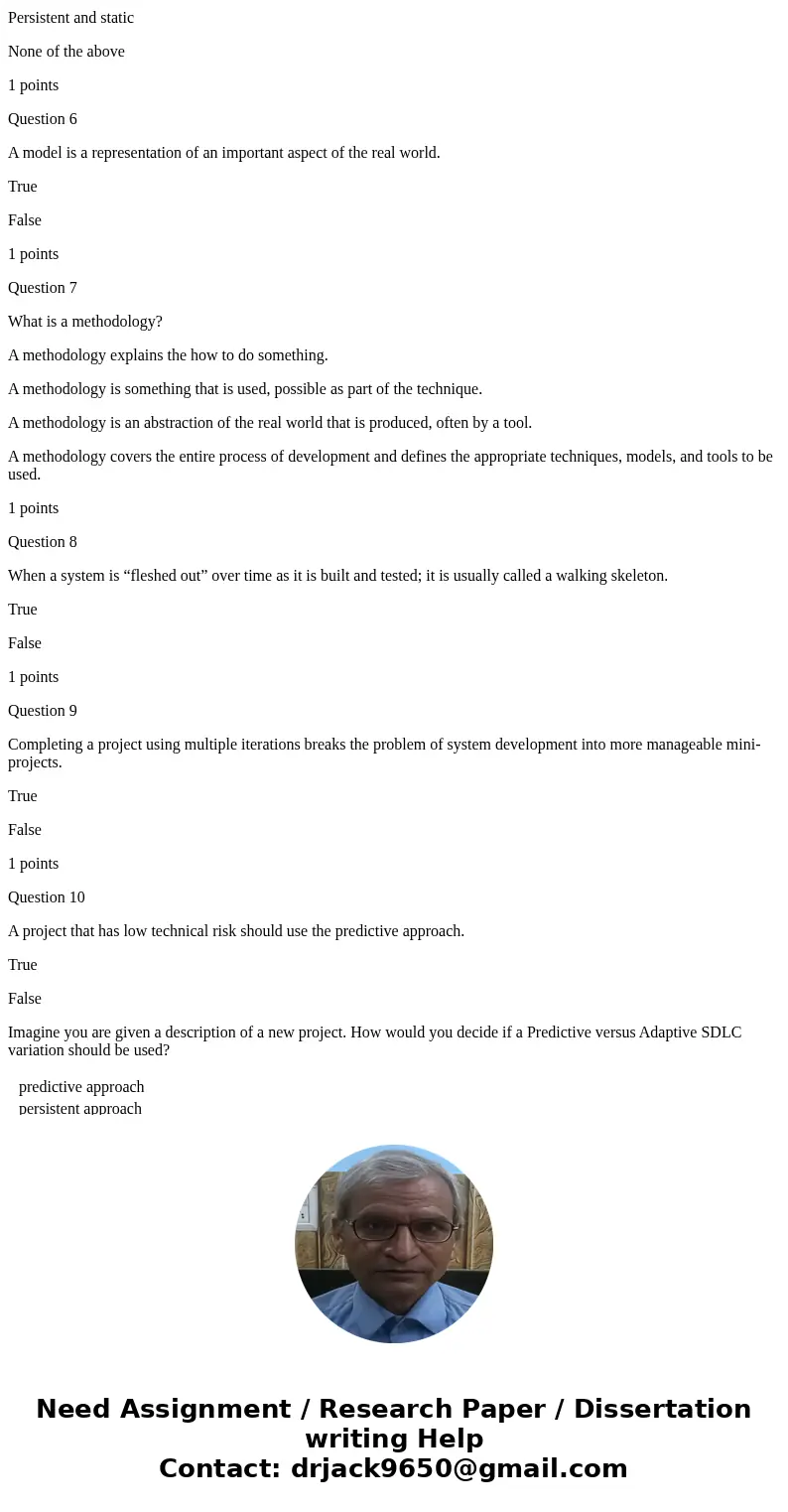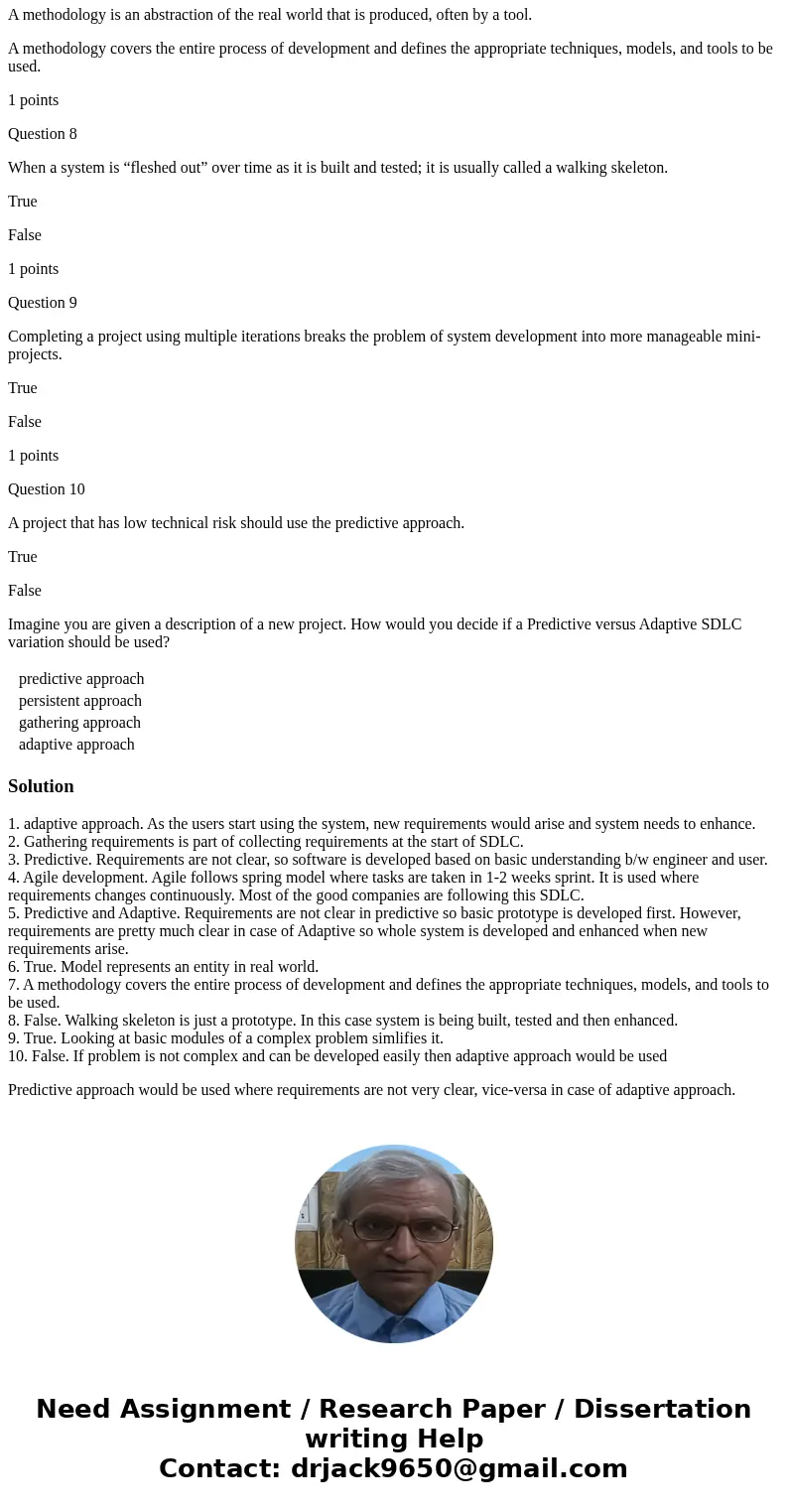Question 1 The recognizes that the project changes as the u
Question 1
The __________________ recognizes that the project changes as the users and development team learn and so the project has to adapt during its lifecycle.
predictive approach
persistent approach
gathering approach
adaptive approach
1 points
Question 2
The three support phase activities include all, except:
Maintaining the system
User support
Gathering requirements
Enhancing the system
1 points
Question 3
A(n) _____ approach to the SDLC is used when the exact requirements of a system or needs of users are not well understood.
predictive
persistent
incremental
adaptive
1 points
Question 4
____ is a philosophy and set of guidelines for developing software in an unknown, rapidly changing environment.
Object-oriented development
Refactoring
Pair programming
Agile development
1 points
Question 5
What are the two approaches to software development?
Structured and object-oriented
Predictive and Adaptive
Persistent and static
None of the above
1 points
Question 6
A model is a representation of an important aspect of the real world.
True
False
1 points
Question 7
What is a methodology?
A methodology explains the how to do something.
A methodology is something that is used, possible as part of the technique.
A methodology is an abstraction of the real world that is produced, often by a tool.
A methodology covers the entire process of development and defines the appropriate techniques, models, and tools to be used.
1 points
Question 8
When a system is “fleshed out” over time as it is built and tested; it is usually called a walking skeleton.
True
False
1 points
Question 9
Completing a project using multiple iterations breaks the problem of system development into more manageable mini-projects.
True
False
1 points
Question 10
A project that has low technical risk should use the predictive approach.
True
False
Imagine you are given a description of a new project. How would you decide if a Predictive versus Adaptive SDLC variation should be used?
| predictive approach | ||
| persistent approach | ||
| gathering approach | ||
| adaptive approach |
Solution
1. adaptive approach. As the users start using the system, new requirements would arise and system needs to enhance.
2. Gathering requirements is part of collecting requirements at the start of SDLC.
3. Predictive. Requirements are not clear, so software is developed based on basic understanding b/w engineer and user.
4. Agile development. Agile follows spring model where tasks are taken in 1-2 weeks sprint. It is used where requirements changes continuously. Most of the good companies are following this SDLC.
5. Predictive and Adaptive. Requirements are not clear in predictive so basic prototype is developed first. However, requirements are pretty much clear in case of Adaptive so whole system is developed and enhanced when new requirements arise.
6. True. Model represents an entity in real world.
7. A methodology covers the entire process of development and defines the appropriate techniques, models, and tools to be used.
8. False. Walking skeleton is just a prototype. In this case system is being built, tested and then enhanced.
9. True. Looking at basic modules of a complex problem simlifies it.
10. False. If problem is not complex and can be developed easily then adaptive approach would be used
Predictive approach would be used where requirements are not very clear, vice-versa in case of adaptive approach.



 Homework Sourse
Homework Sourse